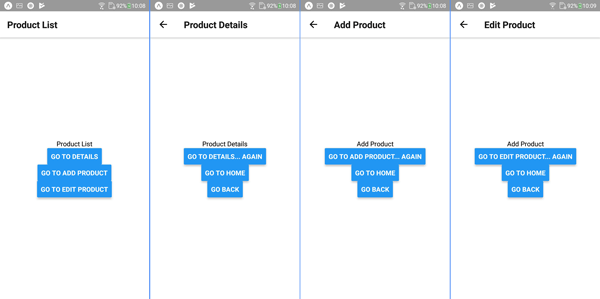

- #Mac android studio view sqlite db emulator series#
- #Mac android studio view sqlite db emulator mac#
- #Mac android studio view sqlite db emulator windows#
So in your command prompt, use pull to a copy of your SQlite database to your mac, e.g. SQLook is intended as an alternative to the adb sqlite3 command prompt for developers who prefer more graphical database tools. In fact, unless you have a rooted device, you can't even get the SQLite. As already written above, your database location on your emulator might be something like /data/data/de.dotnetco/files/myapp.db3. SQLook is a simple Python program that helps you examine an Android application's SQLite database running on an emulator or compatible device using a 3rd party SQLite client application. While it takes various methods to access these database files, interacting is exactly the same on all when using the sqlite3 tool. While Android puts a powerful built-in database at your disposal, it doesn't come with the best set of debugging tools. Our latest release (3.12. This change will make effect in Android Studio 2020.3.1 Arctic Fox (currently in Canary and the next one after 4.2).

Nightly builds often fix bugs reported after the last release. If you are using Java 8 to compile your app, starting from Android Gradle Plugin 7.0 (the next one after 4.2) Java 11 will be required.
#Mac android studio view sqlite db emulator windows#
this tool will be there inside platform-tools folder in your android sdk. DB Browser for SQLite - PortableApp Note - If for any reason the standard Windows release does not work (e.g.
#Mac android studio view sqlite db emulator series#
There may be other ways to copy files from your local computer’s filesystem onto the Android emulator’s filesystem, but I can confirm that (a) this approach works, and (b) I got the “read-only file system” error until I ran this series of commands. Now that you’ve found your app’s SQLite database, here’s a hadful of useful commands to inspect its state and contents. developer, It a command-line tool, that lets you communicate with a device/ emulator. The transfer rate and number of bytes output helps to show that the file was copied to the emulator successfully.
#Mac android studio view sqlite db emulator mac#
Now back at my local filesystem prompt, I was then able to copy my file to the Android emulator filesystem using the adb push command, like this:Īs that command infers, the file foo.jpg was located in my local Mac directory. In the following sequence, I issued the first command from my Mac/Unix operating system shell, and then the subsequent commands were run inside the adb shell: I did that using the following series of commands. The solution to this problem was to re-mount the emulator’s filesystem as a read-write filesystem. $ adb push foo.jpg /data/data//filesįailed to copy 'foo.jpg' to 'foo.jpg': Read-only file system When I tried to copy a file using this command:

However, I just ran into a problem where I couldn’t copy files to my Android emulator’s “data” directory, i.e., the /data/data filesystem. As an Android developer, you can normally use the adb push command to copy files from your computer’s hard drive to an Android device.


 0 kommentar(er)
0 kommentar(er)
